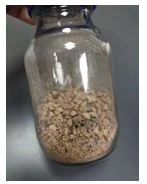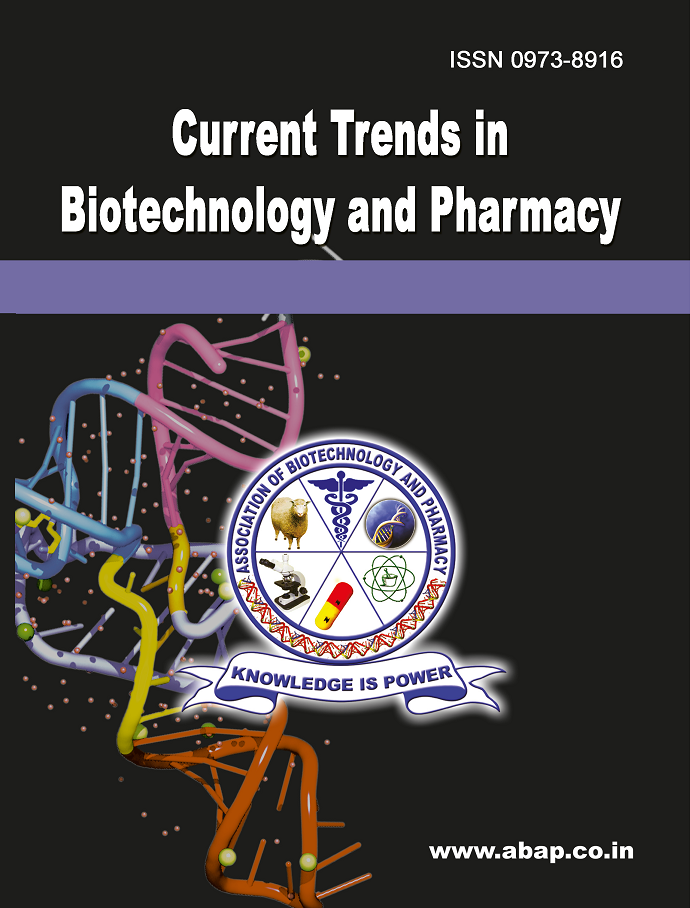Investigation on Flavanoid Extract From Annona Squamosa L. (Sugar Apple) Fruit For Potential Anti-Gout Property: In Vitro Studies
DOI:
https://doi.org/10.5530/ctbp.2024.3s.7Keywords:
Annona squamosa L, Sugar Apple, Antioxidant, Anti-inflammatory, Anti goutAbstract
Introduction: Annona squamosa L. (Sugar Apple) belongs to the Annonaceae family. Different parts of Annona squamosa L. have various medicinal properties such as anti-inflammatory, antioxidant, antidiabetic, antimicrobial, antiulcer,and analgesic activity. Objective(s): To determine the antioxidant, anti-inflammatory and anti-gout properties of flavonoid extract of Annona squamosa L. fruit in the in-vitro and in-vivo studies. Methodologies: Annona squamosa L. fruit was extracted by maceration process using 70% ethanol solution and evaporated at 40C. The ethanolic extract of Annona squamosa L. fruit was screened for the chemical tests carbohydrates, of amino alkaloids, acids, terpenoids, flavonoids, phenols, and tannins. The antioxidant activity of Annona squamosa L. fruit extract undergoes the total phenolic compound (TPC), ferric reducing ability of plasma (FRAP), and 2,2-diphenyl-1 picrylhydrazyl (DPPH) assays. Xanthine oxidase inhibitory (XOI) assay used for anti gout property. Results: A 190 g of Annona squamosa L. fruit obtains 48.60 g of ethanolic extract. Chemical tests for carbohydrates, amino acids, flavonoids, tannins, and terpenoids have positive results while chemical tests for alkaloids, and phenols have negative results. The total phenolic content (TPC) is 8.106 mg GAE/g of Annona and XOI assays of Annona squamosa L. fruit are 4.1154 mg/mL and 4.4745 mg/mL, respectively. Annona squamosa L. fruit extract shows an increase in antioxidant activities and xanthine oxidase inhibition in a concentration-dependent manner. Conclusion: Annona squamosa L.fruit has the potential to be a source of antioxidant, anti inflammatory, and anti-gout properties. Keywords: Annona squamosa L., Sugar Apple, Antioxidant, Anti-inflammatory, Anti gout Introduction Annona squamosa L. is a multipurpose plant that has several medicinal properties such as anti-inflammatory, antioxidant, antimicrobial, cytotoxic, antiulcer, hepatoprotective, antidiabetic, antilipidemic, antitumor, vasorelaxant, anthelmintic, genotoxic, and analgesic activity (1; 2). The medicinal properties involve bioactive compounds in the different parts of the Annona squamosa L. plant as it is used to treat ailments and human diseases. Annona squamosa L. is also used traditionally in treating epilepsy, constipation, haemorrhage, dysentery, fever, ulcer, worm infection, and cardiac complications (2). squamosa L. fruit.The EC1 value for the FRAP assay of Annona squamosa L. fruit is 2.1307 mg/mL. The IC50 values for DPPH and XOI assays of Annona squamosa L. fruit are 4.1154 mg/mL and 4.4745 mg/mL, respectively. Annona squamosa L. fruit extract shows an increase in antioxidant activities and xanthine oxidase inhibition in a concentration-dependent manner. Conclusion: Annona squamosa L.fruit has the potential to be a source of antioxidant, anti inflammatory, and anti-gout properties.



